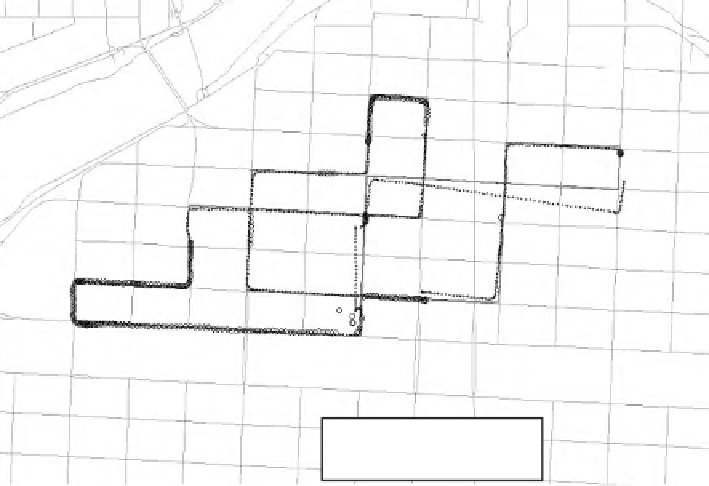Global Positioning System Reference
In-Depth Information
discussed in [29]; however, only a small subset of the performance data is summa-
rized here. The reported tests of primary interest are those tests performed in down-
town areas, as these are expected to be most limiting for GPS coverage. Figure 9.33
is a sample result from the gyro/odometry integration, where the map truth and
unaided GPS trajectories are also shown. Corresponding results for the ABS integra-
tion are shown in Figure 9.34. Both tests were performed with narrow correlator
receivers.
Since it is difficult to make quantitative comparisons from the plots, Table 9.4 is
also abstracted from [29] and provides a rough characterization of the relative per-
formance of the integrated systems. The results represent a summary of roughly a
dozen tests and indicate that the gyro-based system has performance advantages,
particularly in reducing the maximum excursions from the road.
Both DR systems can provide complete solution availability under nominal sen-
sor performance conditions. However, both systems are subject to conditions that
can lead to excessive error growth, which inevitably forces a reset to a GPS solution
in order to recover. For the ABS, road conditions can induce such error behavior,
while, for the gyro-based system, a gyro failure or abrupt and unknown temperature
change can induce this behavior. Generally speaking, this is expected to occur more
frequently for the ABS. The choice, then, for the systems designer, may simply be
whether or not the cost of the gyro is worth the expected reduction in excessive drift
conditions.
9.4
Network Assistance
Network-assisted GPS methods grew out of a need to simultaneously reduce the
time to produce a position solution and increase the sensitivity of the GPS receiver.
Reference
DR filtered
GPS solution
3rd Ave
9th Ave
0
250
500 m
Figure 9.33
GPS and gyro/odometry integration filter results.








Search WWH ::

Custom Search